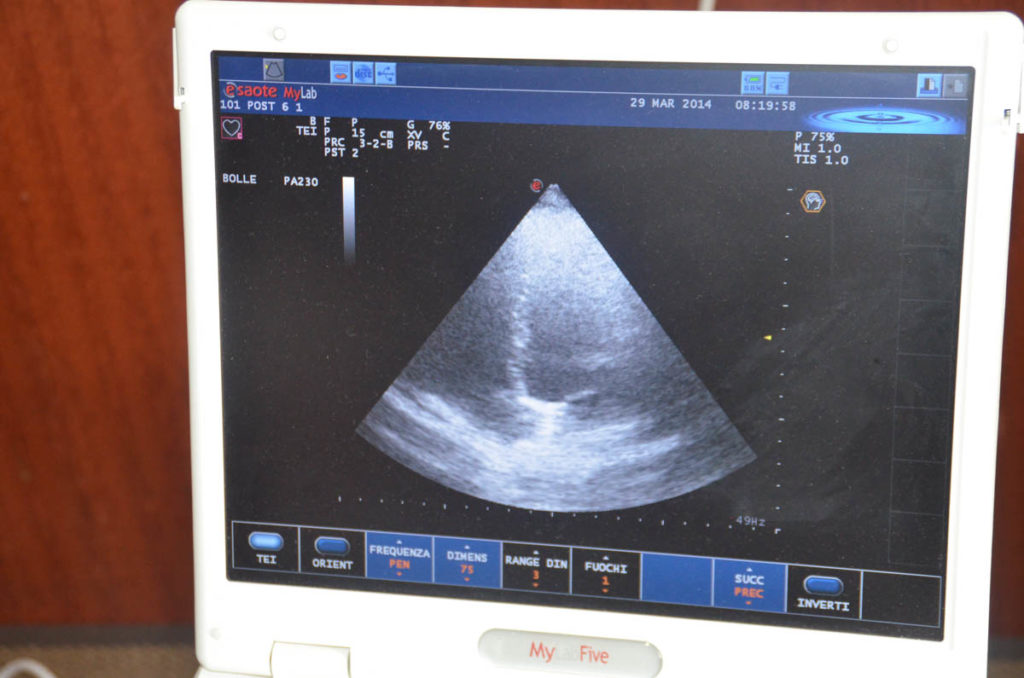In 2013 DAN Europe launched a fascinating study about flying after diving, in cooperation with ALBATROS TOP BOAT and Neos Air it was granted the authorization to carry out heart ultrasounds during a real commercial flight after one week of diving. It thus began a five years emotion with lots of data collected and a scientific publication suggesting to stick to the 24 hours minimum break between the last dive and the take off.
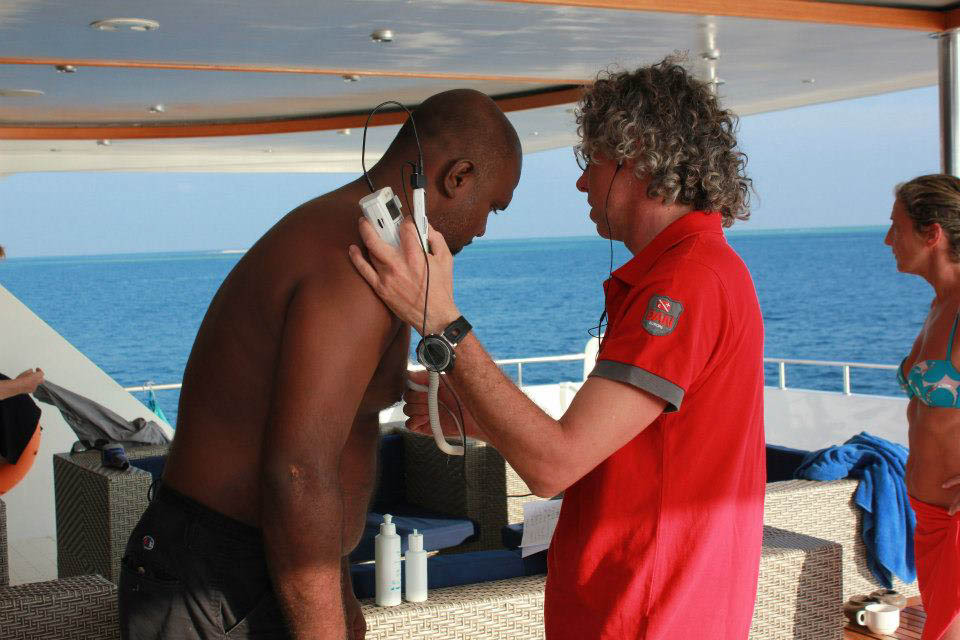
In these five years 130 divers have been screened, 1624 profiles were downloaded from dive computers and the following tests were performed:
| DSL Test | Number of Tests |
| Ultrasounds while flying | 254 |
| B.I.A. (Body Impedence Assessment) | 271 |
| Hematocrit | 900 |
| Hemoglobin | 900 |
| Thermal-imager | 600 |
| Doppler | 506 |
| Ultrasounds | 2104 |
| Real time glycemia | 524 |
| Diving Profiles | 1624 |
A unique research in the whole world that only DAN Europe could have carried out thanks to its team ofcompetent researchers, whom we heartly thank for the dedication shown during all the weeks onboard; in addition to the NO FLY TIME, other very important subjects have emerged, which will bring to a further scientific publication, in the next year, for a better understanding of some factors, such as:
- Post-dive gas bubbles
- Personal predisposition
- Hydration
- Ingested and expelled liquids evaluation
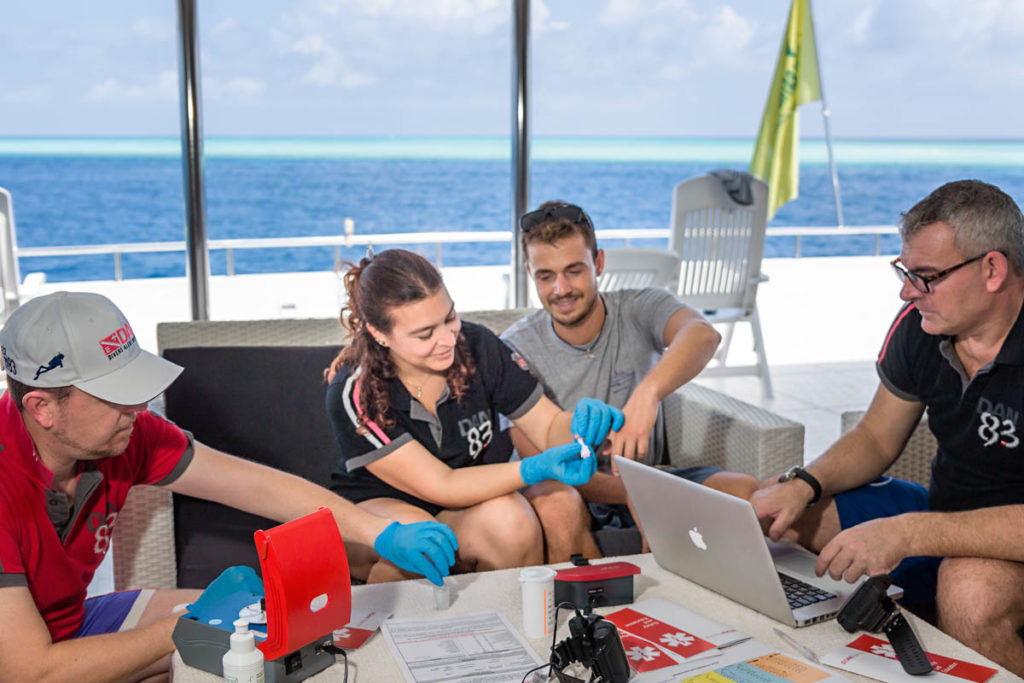
Thanks to the cooperation with ALBATROS TOP BOAT and the logistics granted by their boats, tests on divers onboard could be carried before and after each dive (three times a day for a whole week), developing a deep knowledge on silent bubbles that may show up after a dive.
As known, bubbles can develop at the end of a dive and only when they get to a large number, they can become a problem developing decompression sickness; during these years we could witness, through cardiac ultrasounds/doppler tests, that some divers have a higher predisposition than others to the development of such bubbles.
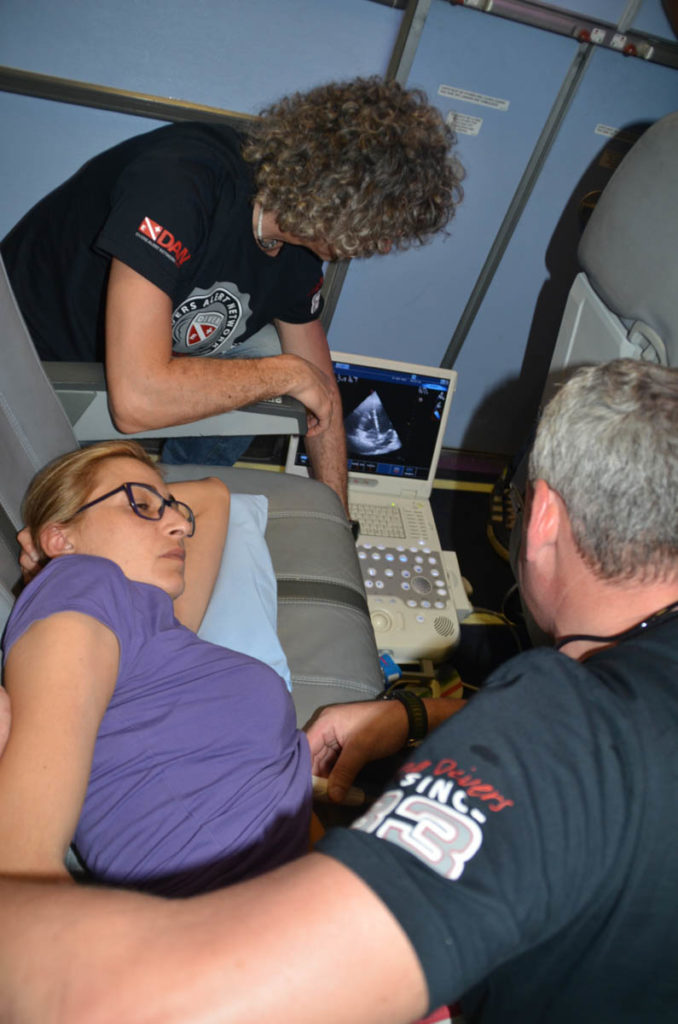
This way, thanks to the possibility of bi-directional feedback, the DAN Europe medical team will be able to suggest more conservative profiles in the near future, even at the very moment the dive takes place. In any case, even without reaching such sophisticated levels of feedback, in the future these data will allow divers to have in-depth control of personal dives and the possibility of correcting their dive profiles over time, adapting them to their physiological characteristics and to the various moments of life, for a more andmore personalized and safe diving.
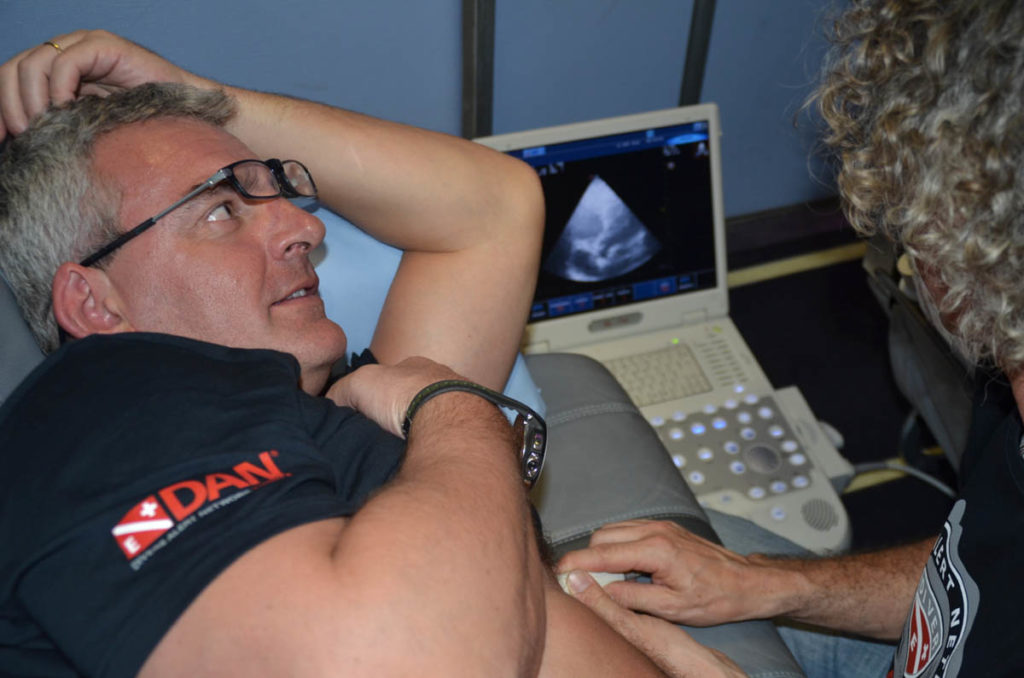
But this is not all: a system of this type must also be very comfortable and for this reason researchers are also studying the adaptation of comfortable sensorized T-shirts (wearable) to underwater use. Such tools will allow a very handy way to collect cardiac data (complete ECG), the respiratory rate, and the position of the diver
These tests produced a great quantity of data that are now subject of study by DAN researchers.
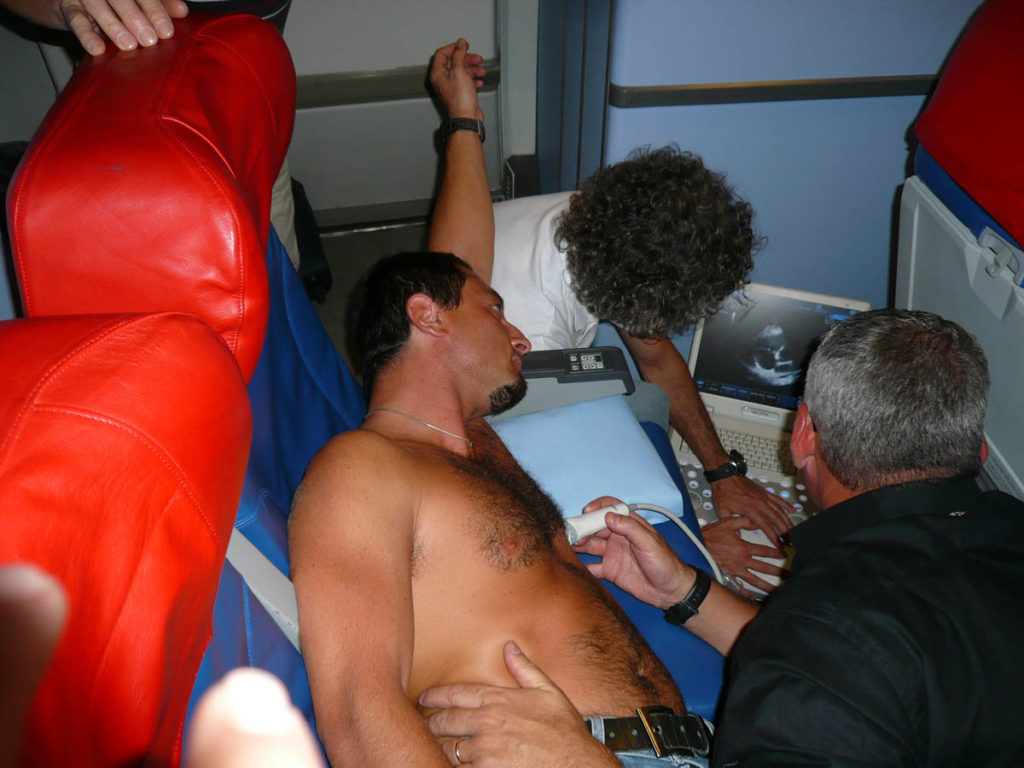
One more important innovation has been tested during this last week by DAN Europe researchers: as a matter of fact it is of great importance to DAN to geolocalize a diver lost at sea. As known, the first moments of the emergency are crucial for finding a missing person at sea, in which at least one estimated position be known, Often, however, weather and sea conditions along with currents, make this position too far from the real positioning of the diver, consequently the search and recovery operation is very difficult and unfortunately unsuccessful.
During this week the researchers tested a new device capable of providing much information on a dive but also able to provide, once again in real time, the diver’s exact position via a satellite device and therefore not conditioned by conditions coverage of ordinary networks.
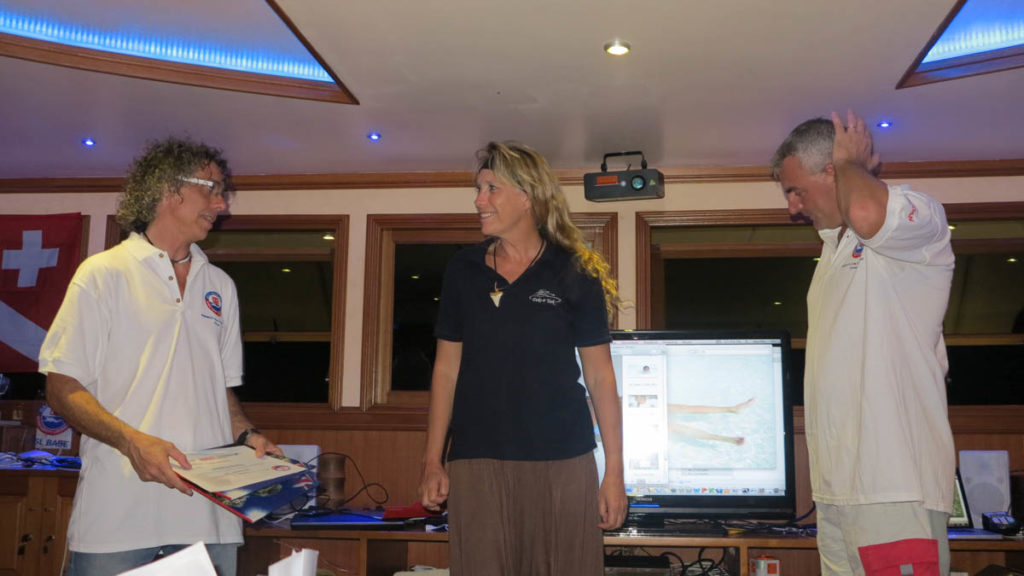
With such a device the diver can transmit an SOS signal with geolocalization and dive information, immediately available to the DAN Europe emergency call center.
In this case, too, the diver will be able to receive immediate feed-back from the control center such as confirmation of receipt of the SOS, or the estimated recovery time. The system, connected in real time with the DAN emergency center, will offer higher guarantees to divers in case of dispersion, even in remote locations and in presence of strong currents, indeed the position will be automatically updated in real time.
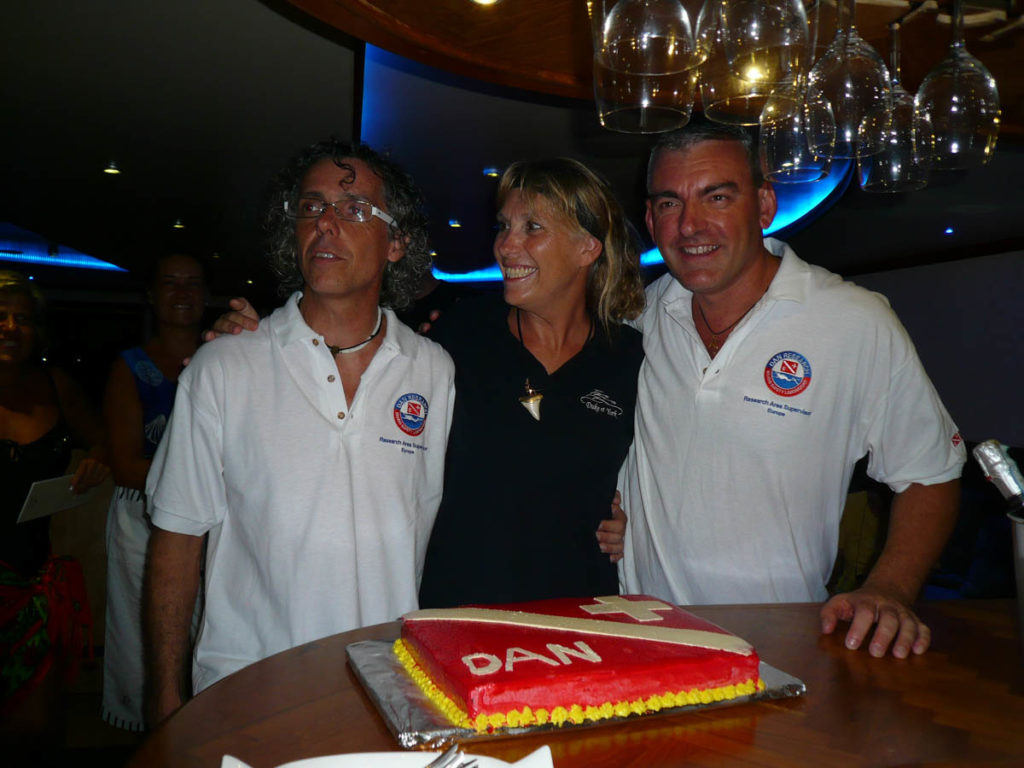
Regarding the part of the physiological tests relating to the DAN Europe mobile laboratory, 10 divers were monitored for 6 consecutive days pre and post dive, collecting, once again, important data for the safety of the dives useful for the preparation of the new challenge of DAN Europe Research. A new research project has been added to the list of DAN Europe DSL tests related to hydration, in particular a complete urine test was performed to understand if some parameters can be used as a decompression stress index: once again a worldwide premiere aboard ALBATROS TOP BOAT.
Some data from this safari
| Max Depth | Runtime | Water Temp | |
| Number of values | 152 | 152 | 152 |
| Minimum | 20,20 | 11,17 | 28,20 |
| Maximum | 32,80 | 74,17 | 30,00 |
| Mean | 29,84 | 54,67 | 29,34 |
As always, a first analysed fact is related to the bubbles and the general going during the data collection week.
All this will be part of a new fascinating journey in the discovery of the physiology of the human body while diving, and special attention will be paid to the possibility of real-time feedback for the divers. Research is a wonderful world and all this goes to the service of the many divers who believe in DAN Europe’s activities and contribute to it by becoming an active part of research, long story short: citizen science.
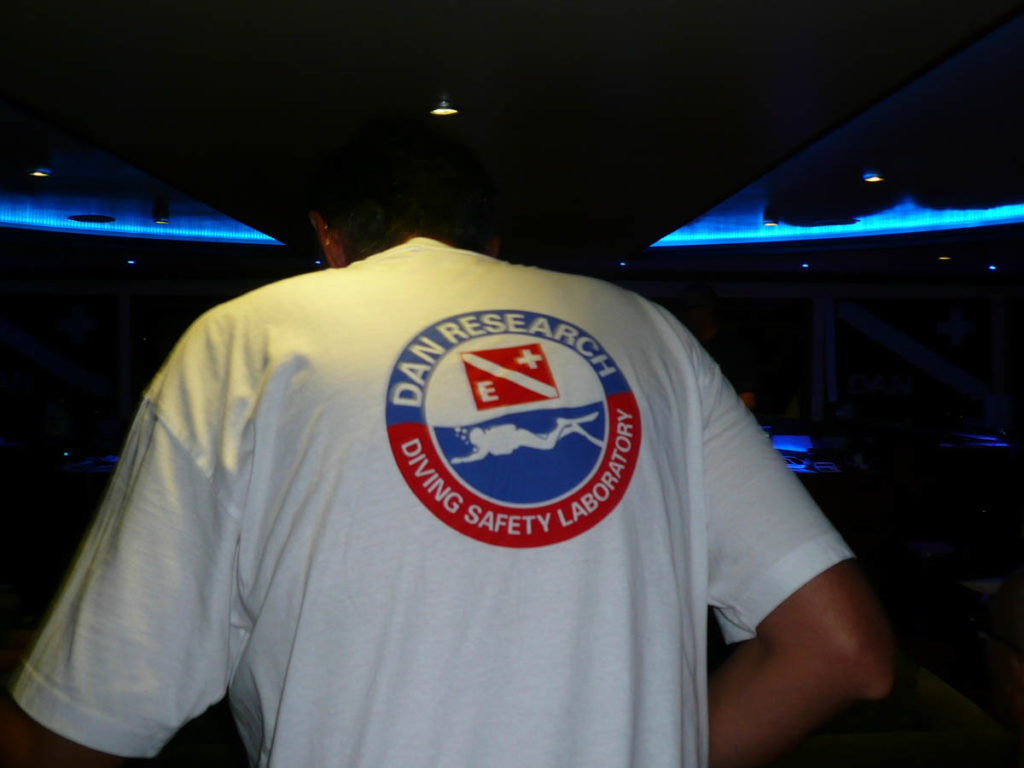
The future lays ahead of us with new research adventures that will lead us to experience more and more engaging and useful events in the DAN mission on safety in diving.
Looking forward to having you on the next flight in the advanced research of DAN Europe.
Next Rebreather safari in collaboration with DAN EUROPE
Onboard M/Y Duke of York leaving from Italy on May 2nd, until May 10th, 2020



